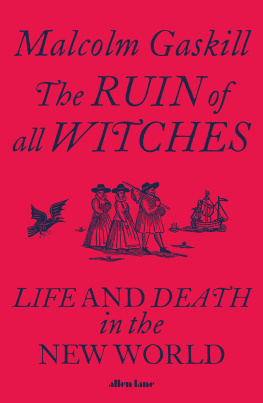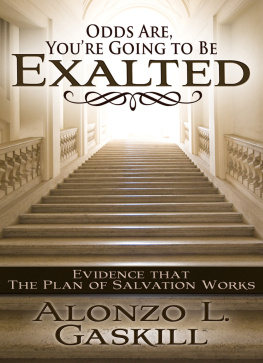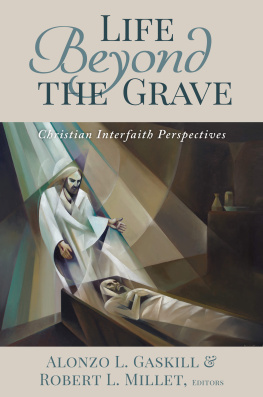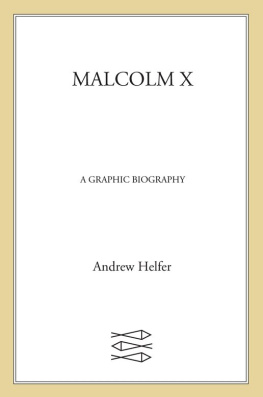Malcolm Gaskill - The ruin of all witches : life and death in the New World
Here you can read online Malcolm Gaskill - The ruin of all witches : life and death in the New World full text of the book (entire story) in english for free. Download pdf and epub, get meaning, cover and reviews about this ebook. year: 2021, publisher: Penguin Books Ltd, genre: Art. Description of the work, (preface) as well as reviews are available. Best literature library LitArk.com created for fans of good reading and offers a wide selection of genres:
Romance novel
Science fiction
Adventure
Detective
Science
History
Home and family
Prose
Art
Politics
Computer
Non-fiction
Religion
Business
Children
Humor
Choose a favorite category and find really read worthwhile books. Enjoy immersion in the world of imagination, feel the emotions of the characters or learn something new for yourself, make an fascinating discovery.
- Book:The ruin of all witches : life and death in the New World
- Author:
- Publisher:Penguin Books Ltd
- Genre:
- Year:2021
- Rating:4 / 5
- Favourites:Add to favourites
- Your mark:
- 80
- 1
- 2
- 3
- 4
- 5
The ruin of all witches : life and death in the New World: summary, description and annotation
We offer to read an annotation, description, summary or preface (depends on what the author of the book "The ruin of all witches : life and death in the New World" wrote himself). If you haven't found the necessary information about the book — write in the comments, we will try to find it.
The ruin of all witches : life and death in the New World — read online for free the complete book (whole text) full work
Below is the text of the book, divided by pages. System saving the place of the last page read, allows you to conveniently read the book "The ruin of all witches : life and death in the New World" online for free, without having to search again every time where you left off. Put a bookmark, and you can go to the page where you finished reading at any time.
Font size:
Interval:
Bookmark:

PENGUIN BOOKS
UK | USA | Canada | Ireland | Australia
New Zealand | India | South Africa
Penguin Books is part of the Penguin Random House group of companies whose addresses can be found at global.penguinrandomhouse.com.

First published in Great Britain by Allen Lane 2021
Copyright Malcolm Gaskill, 2021
The moral right of the author has been asserted
Cover image: details from 17th and 18th century woodcuts (Stapleton Collection/Bridgeman Images)
ISBN: 978-0-241-41340-1
This ebook is copyright material and must not be copied, reproduced, transferred, distributed, leased, licensed or publicly performed or used in any way except as specifically permitted in writing by the publishers, as allowed under the terms and conditions under which it was purchased or as strictly permitted by applicable copyright law. Any unauthorized distribution or use of this text may be a direct infringement of the authors and publishers rights and those responsible may be liable in law accordingly.
For Sheena Peirse
Who makes all things possible
Always and everywhere, human beings have felt the radical inadequacy of their personal existence, the misery of being their insulated selves and not something else, something wider.
Aldous Huxley, The Devils of Loudun (1952), appendix
A house, a city, a kingdom, divided against itself cannot stand Therefore if division do inevitably bring destruction to a kingdom, to a city, how shall one poor family divided subsist without destruction?
Robert Burnam, A Remonstrance, 1645 the year Hugh Parsons and Mary Lewis were married in New England
One reason why she doth suspect you to be a witch is because you cannot abide that anything should be spoken against witches this expression of your anger was because she wished the ruin of all witches.
William Pynchon, interrogating Hugh Parsons about his wife Mary, 1651 the year their marriage ended
The dates of the Old Style Julian calendar, whereby the New Year began on 25 March, have been changed to New Style so that the year starts on 1 January.
Sums of money are given as pounds, shillings and pence (, s, d). There were twelve pence to a shilling and twenty shillings to a pound. In New England, where silver was scarce, other forms of currency were used, including bushels of corn and Native American wampum blue-and-white polished shells, pierced and strung on long cords.
Spellings and punctuation in quotations have been modernized, contractions expanded and names standardized. As in Old England, people addressed each other as Goodman, Goodwife (or Goody) and Widow. The gentry were Mister and Mistress.
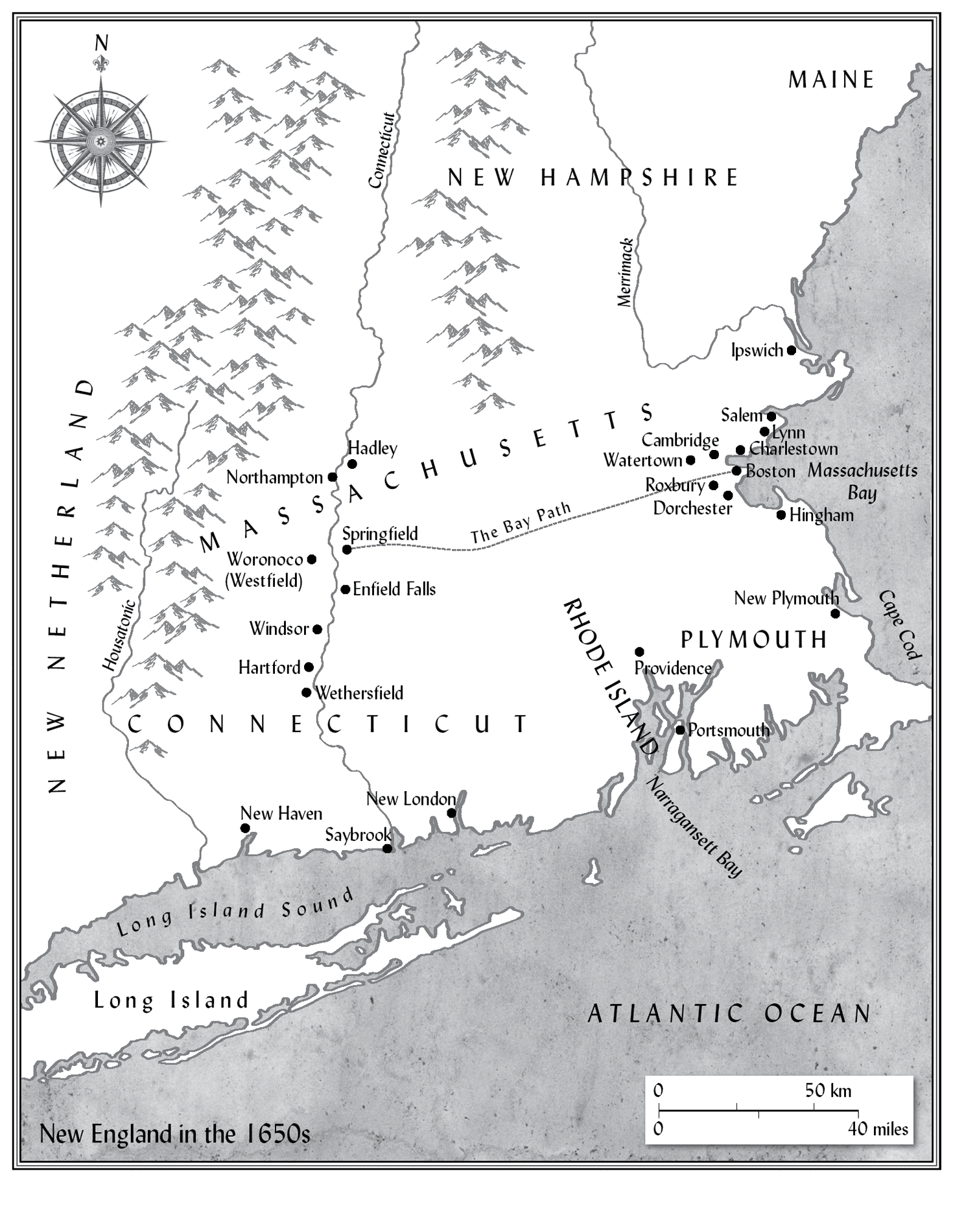
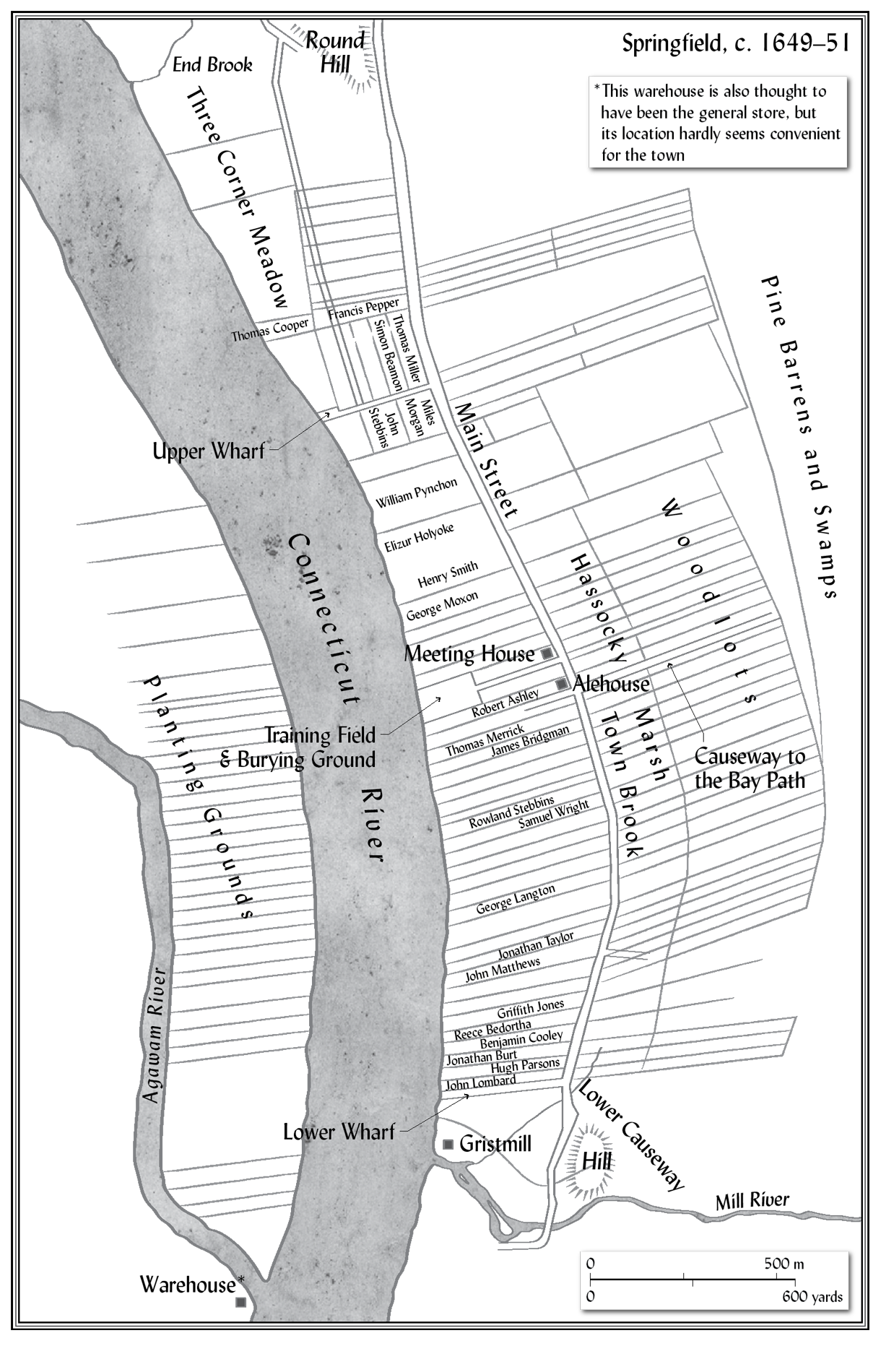
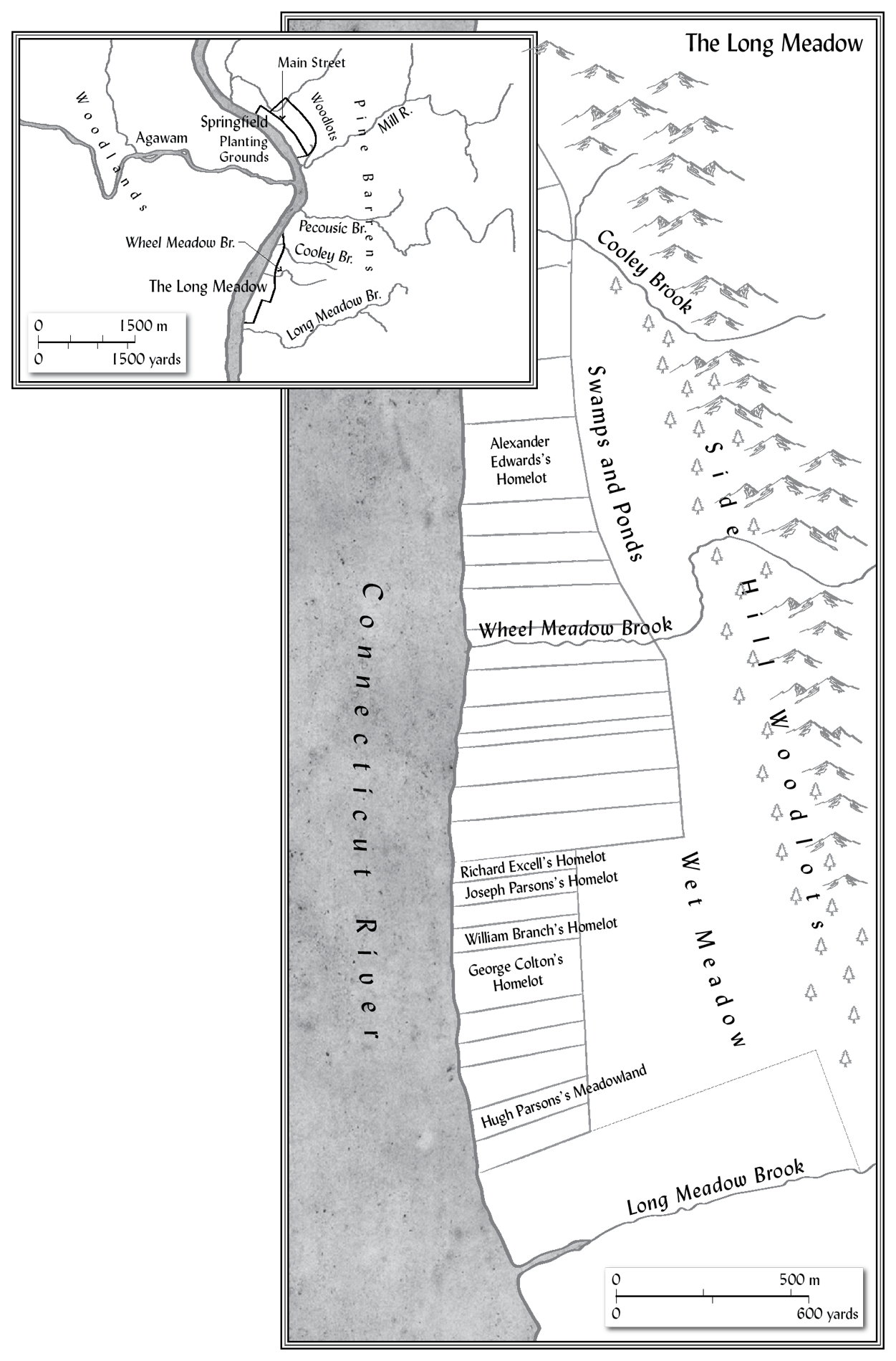
Hugh Parsons, a turbulent English brickmaker and jack-of-all-trades, in his thirties.
Mary Parsons (formerly Lewis), a maidservant from Wales, Hughs wife (m. 1645).
Hannah (b. 1646), Samuel (b. 1648) and Joshua Parsons (b. 1650), their children.
William Pynchon, founder of Springfield, fur trader, magistrate and amateur theologian.
Anne Smith, Pynchons daughter, mother of many daughters, confidante to Mary Parsons.
Henry Smith, her husband (and Pynchons stepson), town clerk and sometime deputy magistrate.
Margaret (b. 1646) and Sarah (b. 1647), the Smiths daughters, who perished in June 1648.
George Moxon, minister, whose daughters Martha and Rebecca were possessed or bewitched.
Thomas Merrick, a Welshman, town constable.
Sarah Merrick, Thomass wife, implicated as a witch.
Mercy Marshfield, a widow of dubious reputation, who fled Windsor to resettle in Springfield.
Sarah Miller, wife of unlucky sawyer Thomas Miller and Widow Marshfields daughter, who suffered fits and saw terrifying apparitions.
John Stebbins, whose wife Anne also had fits, and on whose homelot the witches met in secret.
Mary Bliss Parsons (no relation), who was troubled by spirits and roamed the meadow at night.
Anthony Dorchester, a poor, ambitious man and his ailing wife Sarah, Hugh Parsonss lodgers.
John Lombard, a herdsman from Somerset, the Parsonses next-door neighbour, whose borrowed trowel mysteriously vanished.
Blanche Bedortha, a Welsh housewife, married to Reece, a carter, terrified of Hugh during her pregnancy.
Pentecost Matthews, also Welsh, wife of John, and first to notice Marys witch obsession.
William Branch, the town barber, who was disturbed in the night and fell strangely lame.
Griffith Jones, a Welsh tanner, tricked at home by witchery.
Thomas Cooper, a Warwickshire carpenter, who heard Mary Parsonss shocking confession.
George Colton, William Pynchons quartermaster, a principal witness against Hugh Parsons.
Benjamin Cooley, a weaver, Coltons brother-in-law, next-door neighbour to the Bedorthas.
George and Hannah Langton, who were convinced their steamed meat pudding was bewitched.
Simon Beamon, cobbler and servant to William Pynchon, prey to Hugh Parsonss impatience.
Alexander Edwards, who had known Mary in Wales, and whose cow gave abnormal milk.
Jonathan Taylor, a young married labourer, menaced in his bed by demonic serpents.
This is a true story about witchcraft in mid-seventeenth-century New England. At this time none of its colonies New Hampshire, Plymouth, Massachusetts, Rhode Island and Connecticut, sited along Americas east coast was over thirty years old. Each was still finding its way in a new world. Unlike the icy shores of Newfoundland and Maine or the tropics of Virginia and the Caribbean, New England resembled the old, with hills and plains, forests and rivers. For much of the year the climate was mild well suited to English bodies, colonists felt. Farmsteads produced cattle and corn. There were busy ports at Boston and Salem, and trade flourished. Yet life was fraught with peril. Settlers were far from home, assailed by sharp winters and sweltering summers and hemmed in by wilderness. By day a labourer could pretend he was still tending wheat in Kent or herding sheep in Wiltshire; but the illusion was easily dispelled, especially after sunset. Old World folktales where travellers were stalked by evil became reality, trapping colonists in nightmares of echoing isolation and heart-thumping panic. In these moments, New England, for all its hopeful beginnings, meant only the skin-prickle of being watched, the twisting grip of a curse and the terrors of the dark.
The setting for this story is a remote community in Massachusetts, a hundred miles west of Boston, named Springfield. There, on the border between what they saw as civility and barbarism, Springfields pioneers laboured to cultivate both land and a new way of living together, only too aware of how closely their fragile world was overseen by God and existed at his mercy. They contended with waves of epidemics, severe flooding and constant tension with the Native Americans they called Indians, whose possessions they appropriated. They also clashed with Dutch traders into whose territory they strayed, and with English planters further down the Connecticut River valley. Mostly, however, they clashed with their own neighbours, competing furiously for material advantage: farmland, livestock, wealth and power. Whenever this fury subsided, consciences were apt to be pricked, guilt bubbling up in private thoughts, and in dreams where colonists saw their own self-serving desires wrestling with those of their enemies. But still they didnt yield; nor did they show remorse. Instead, conflicting emotions were batted away, projected onto a diabolic other onto witches and thus assuaged.
Font size:
Interval:
Bookmark:
Similar books «The ruin of all witches : life and death in the New World»
Look at similar books to The ruin of all witches : life and death in the New World. We have selected literature similar in name and meaning in the hope of providing readers with more options to find new, interesting, not yet read works.
Discussion, reviews of the book The ruin of all witches : life and death in the New World and just readers' own opinions. Leave your comments, write what you think about the work, its meaning or the main characters. Specify what exactly you liked and what you didn't like, and why you think so.

